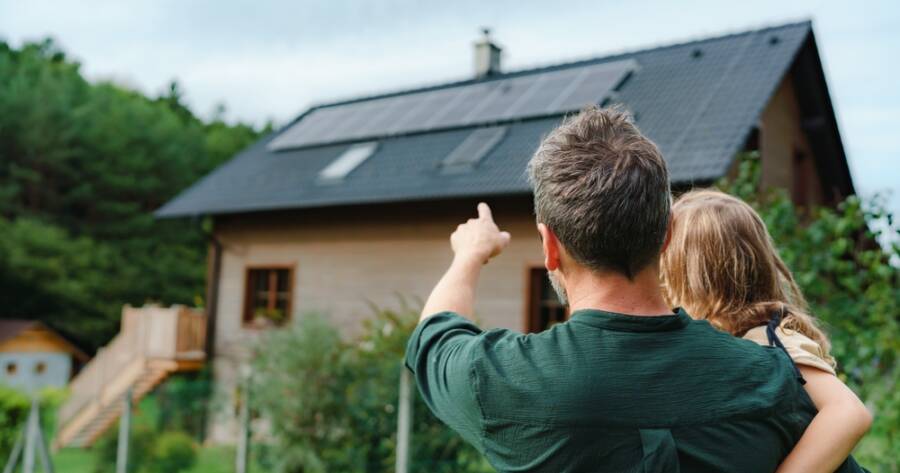Discover the advantages of eco houses, where sustainable design meets modern living. Enjoy reduced energy costs, a smaller carbon footprint, and a healthier living environment. Eco houses offer a harmonious blend of innovation, efficiency, and environmental stewardship.
What Are Eco Houses?
Eco houses, also known as sustainable or green homes, are designed and built to minimize their environmental impact. They incorporate various eco-friendly features and technologies to reduce energy consumption, conserve water, and promote overall sustainability. These homes prioritize the use of renewable energy sources, sustainable materials, and efficient building practices to create a healthier and more environmentally responsible living environment.
The concept of eco houses gained significant momentum in the late 20th century as concerns about climate change and environmental degradation grew. Governments, architects, and homeowners began exploring innovative ways to reduce the carbon footprint of residential buildings. Today, eco houses are increasingly popular as individuals and communities strive to adopt more sustainable lifestyles.
Eco houses often incorporate features such as solar panels, rainwater harvesting systems, energy-efficient appliances, and natural ventilation to minimize their reliance on conventional energy sources and reduce greenhouse gas emissions. They are also designed to optimize natural light, reduce waste, and promote indoor air quality, creating a healthier and more comfortable living environment for occupants.1
Eco-Friendly Living: Key Features
Eco-friendly living encompasses a range of practices and technologies that aim to reduce an individual’s or household’s environmental impact.2 Key features of eco-friendly living typically include:
- Energy Efficiency: Eco-friendly homes incorporate energy-efficient appliances, insulation, and building materials to minimize energy consumption. This can include using LED lighting, ENERGY STAR-rated appliances, and programmable thermostats.
- Renewable Energy: Eco-friendly homes often utilize renewable energy sources such as solar panels, wind turbines, and geothermal heat pumps to generate their own electricity and heat.
- Water Conservation: Eco-friendly homes employ water-saving fixtures, rainwater harvesting systems, and greywater recycling to reduce water consumption.
- Sustainable Materials: Eco-friendly homes prioritize the use of sustainable and recycled materials in construction and装修. This can include using reclaimed wood, bamboo flooring, and recycled glass countertops.
- Waste Reduction: Eco-friendly homes emphasize waste reduction through composting, recycling, and purchasing products with minimal packaging.
- Indoor Air Quality: Eco-friendly homes prioritize indoor air quality by using low-VOC paints, avoiding toxic cleaning products, and ensuring proper ventilation.
The Impact of Eco-Friendly Living
Adopting eco-friendly living practices can have numerous positive impacts on individuals, communities, and the environment. These impacts include:
- Reduced Environmental Impact: Eco-friendly living helps reduce greenhouse gas emissions, conserve natural resources, and protect ecosystems.
- Lower Energy Bills: Energy-efficient homes can significantly reduce energy bills, saving homeowners money in the long run.
- Improved Health: Eco-friendly homes with good indoor air quality and access to natural light can improve the health and well-being of occupants.
- Increased Property Value: Eco-friendly homes are often seen as more desirable by potential buyers, leading to increased property values.
- Community Resilience: Eco-friendly communities can be more resilient to the impacts of climate change, such as extreme weather events.
Learn More About Eco-Friendly Living
There are numerous resources available to individuals interested in learning more about eco-friendly living and making sustainable choices. These resources include:
- Government Websites: Many government agencies provide information and resources on eco-friendly living, including energy efficiency, renewable energy, and sustainable building practices.
- Nonprofit Organizations: Many nonprofit organizations are dedicated to promoting eco-friendly living and sustainability. These organizations often provide educational resources, workshops, and advocacy campaigns.
- Online Resources: Numerous websites and blogs provide information and tips on eco-friendly living, covering topics such as energy efficiency, water conservation, and sustainable consumption.
- Books and Magazines: There are many books and magazines available that provide in-depth information on eco-friendly living and sustainability. These resources can offer practical advice and inspiration for individuals looking to make a difference.

